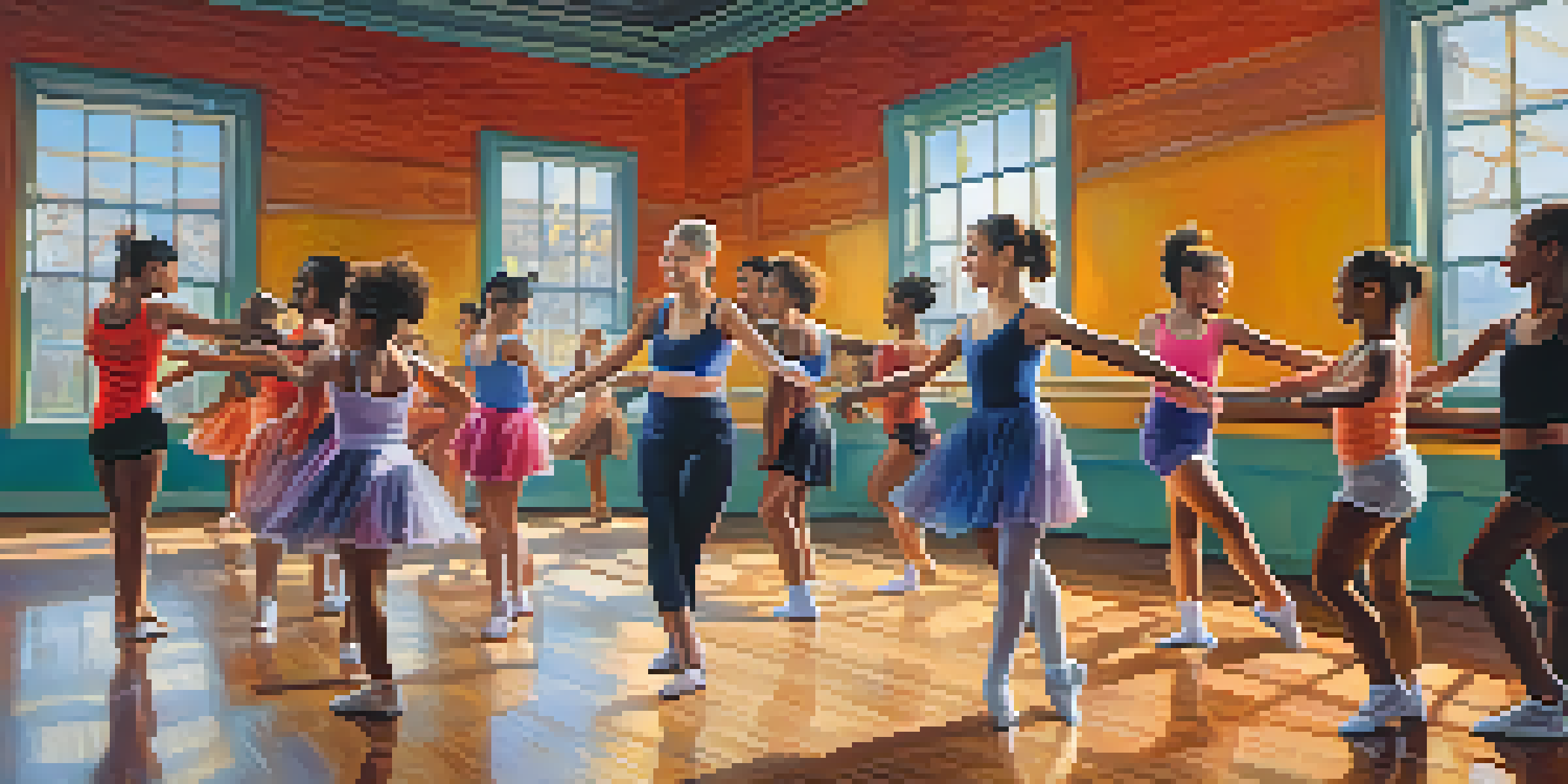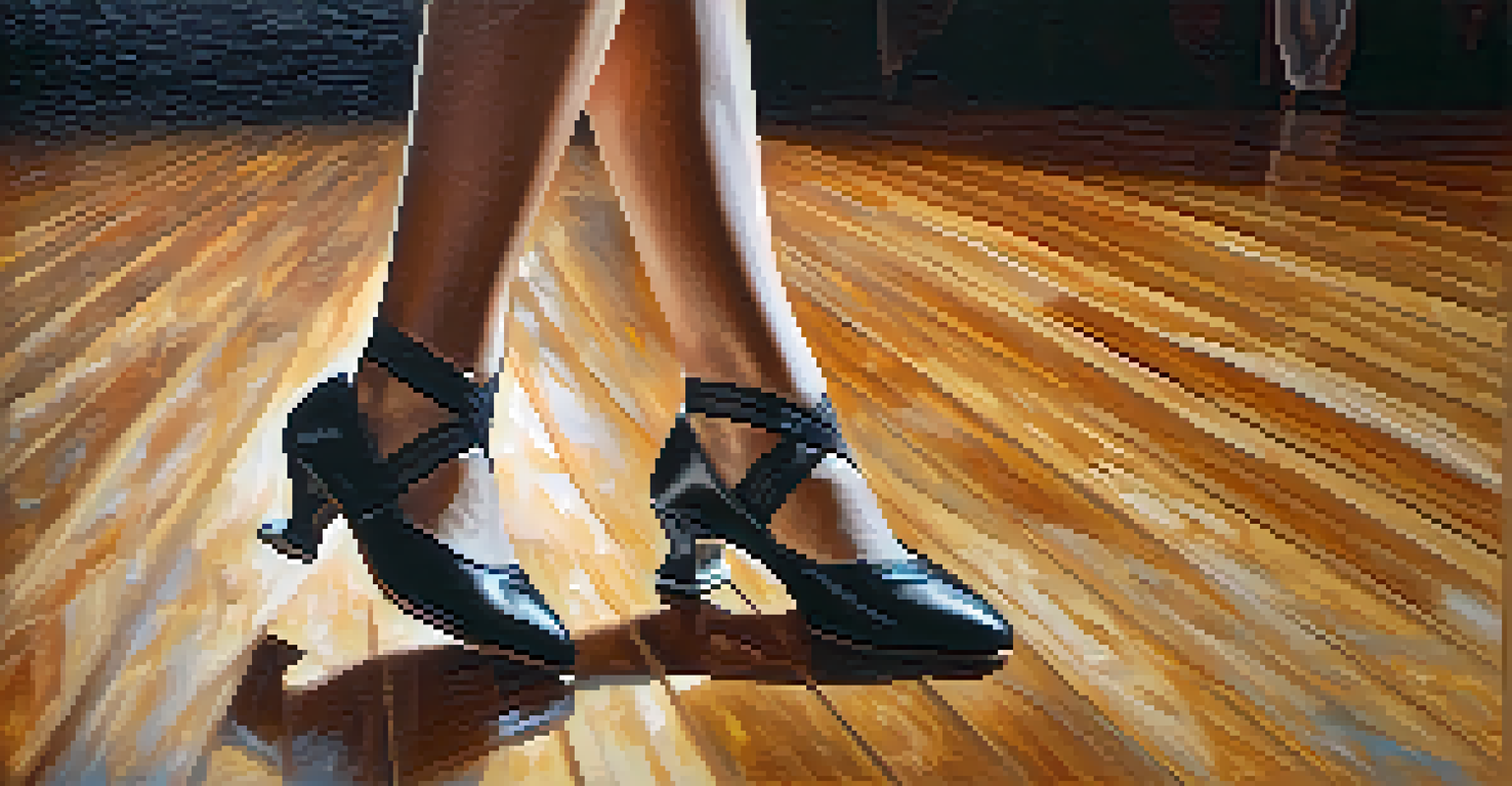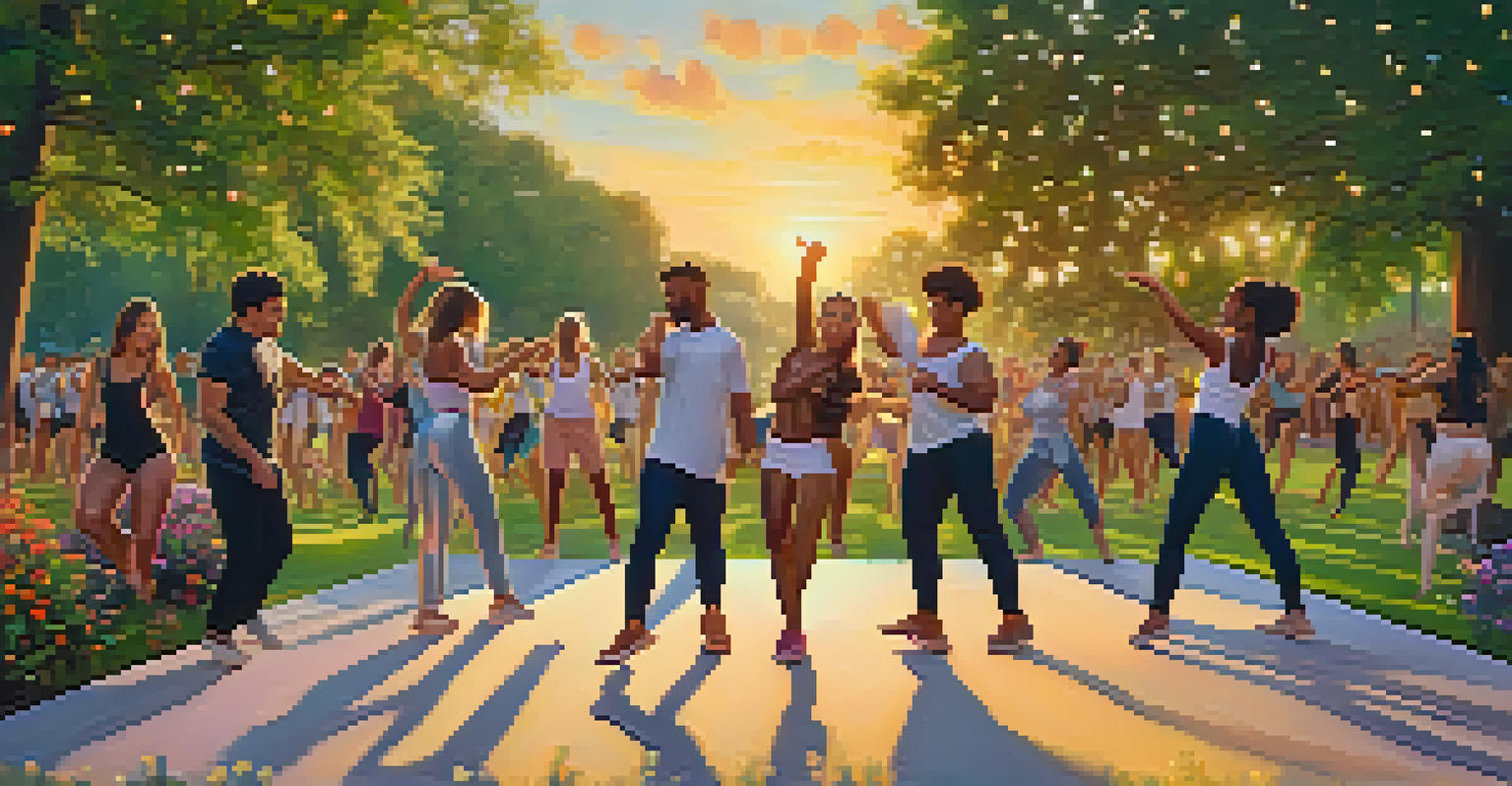The Impact of Social Media on Dance Trends and Innovations

The Rise of Dance Challenges on Social Media Platforms
In recent years, social media has given birth to countless dance challenges, from the viral ‘Renegade’ to the ‘Savage’ dance. These challenges often start on platforms like TikTok, where users create short dance videos that quickly gain popularity. The participatory nature of these challenges allows dancers of all skill levels to join in, democratizing dance and inviting collaboration.
Dance is the hidden language of the soul.
For many, these challenges are more than just a fun activity; they serve as a gateway to explore dance. People who may have never considered themselves dancers are now showcasing their moves online, creating a sense of community and belonging. This phenomenon has led to a surge in interest in dance classes, both online and offline, as individuals seek to refine their skills.
Moreover, the impact of these challenges extends beyond just the participants; they also influence professional dancers and choreographers. Many are inspired to create their own versions of these viral dances, which can lead to innovative choreography that blends various styles, ensuring that dance continues to evolve.
Social Media as a Platform for Dance Education
Social media platforms have transformed into valuable resources for dance education, making learning more accessible than ever. Platforms like Instagram and YouTube are filled with tutorials and dance lessons, allowing anyone to learn at their own pace. This accessibility means that aspiring dancers can refine their technique and style from the comfort of their homes.

In addition to tutorials, many professional dancers and choreographers offer insights into their creative processes through live streams and Q&A sessions. This transparency fosters a richer understanding of the art form and encourages budding dancers to explore their own creativity. For many, these interactions can be as impactful as formal training.
Dance Challenges Foster Community
Social media dance challenges create a sense of belonging and inspire individuals to explore their creativity in dance.
Furthermore, social media fosters a global exchange of dance styles and techniques, breaking geographical barriers. Dancers can learn about and incorporate elements from various cultures into their own work, enriching the dance community and promoting innovation.
The Role of Influencers in Shaping Dance Trends
Influencers play a pivotal role in shaping dance trends by leveraging their large followings. When a popular influencer shares a dance video, it can inspire thousands to replicate the moves or create their own variations. This ripple effect can lead to the rapid spread of new dance styles, often overshadowing traditional forms.
The dance is a poem of which each movement is a word.
Moreover, influencers often collaborate with professional dancers, blending expertise with mainstream appeal. These collaborations can generate buzz and elevate the visibility of dance as an art form, encouraging more people to engage with it. As a result, dance becomes not only a personal expression but also a cultural phenomenon.
However, it's essential to recognize that the influence of social media can be a double-edged sword. While it promotes diversity and creativity, it can also lead to the commodification of dance, where trends come and go quickly, leaving little room for deeper appreciation of the art form itself.
The Impact of Viral Videos on Dance Styles
Viral videos on social media platforms have a profound impact on the evolution of dance styles. When a unique dance move or sequence goes viral, it can spark a trend that influences dancers worldwide. This phenomenon leads to the emergence of new styles that often blend elements from various genres, resulting in innovative choreography.
Take, for instance, the fusion of hip-hop and ballet seen in many contemporary performances today. Influenced by viral challenges and videos, many dancers are experimenting with hybrid styles, creating fresh and exciting performances that capture the audience's attention. These new styles often reflect the cultural zeitgeist, showcasing dance as a living, breathing art form.
Influencers Shape Dance Trends
Influencers play a crucial role in popularizing new dance styles, driving engagement and innovation within the dance community.
Additionally, viral videos often serve as a source of inspiration for professional dancers and choreographers. By observing what resonates with audiences, they can incorporate popular elements into their work, pushing the boundaries of traditional dance and inviting audiences to engage in new ways.
Building Communities Through Dance on Social Media
Social media has become a vital tool for building dance communities, connecting enthusiasts from around the globe. Through hashtags and dedicated dance pages, dancers can share their work, gain feedback, and support one another. This sense of community fosters collaboration and inspires creativity, as individuals feel encouraged to share their unique styles and stories.
Many dancers also use social media to organize events, workshops, and challenges that bring people together. These events create opportunities for networking and learning, further strengthening the bonds within the dance community. Participants often find a sense of belonging that transcends physical locations.
In this digital age, the power of social media in nurturing dance communities cannot be overstated. It allows for the celebration of diversity in dance, where different backgrounds and experiences contribute to a richer tapestry of movement, fostering acceptance and appreciation among dancers.
Challenges Faced by Dancers in the Digital Age
While social media offers numerous benefits to dancers, it also presents unique challenges that can affect their mental health and artistic expression. The pressure to create content regularly can lead to burnout, as dancers feel they must constantly be in the spotlight. This relentless pursuit of visibility can detract from the joy of dance itself.
Moreover, the constant comparison to others can foster self-doubt among dancers. Watching peers achieve viral success can lead to feelings of inadequacy, affecting their passion for the art form. It's crucial for dancers to remember that everyone's journey is different, and success can be measured in various ways.
Social Media's Double-Edged Sword
While social media promotes creativity, it also poses challenges like burnout and self-doubt among dancers due to constant comparison.
In navigating these challenges, many dancers emphasize the importance of self-care and authenticity. Finding a balance between sharing their work online and nurturing their passion for dance can help mitigate the negative effects of social media, allowing them to flourish both personally and artistically.
The Future of Dance in the Age of Social Media
As social media continues to evolve, so too will the landscape of dance. Emerging technologies like virtual reality and augmented reality are poised to enhance the way we experience dance, offering new platforms for creativity and engagement. Dancers may soon be able to share their performances in entirely new dimensions, reaching broader audiences.
Additionally, as the lines between various dance genres blur, we can expect to see an even greater fusion of styles driven by social media trends. This evolution will likely lead to the emergence of new dance forms, reflecting the diverse influences of our interconnected world.

Ultimately, the future of dance in the age of social media holds immense potential for innovation and collaboration. By embracing these changes while staying true to the roots of the art form, dancers can continue to inspire and connect with audiences around the globe.